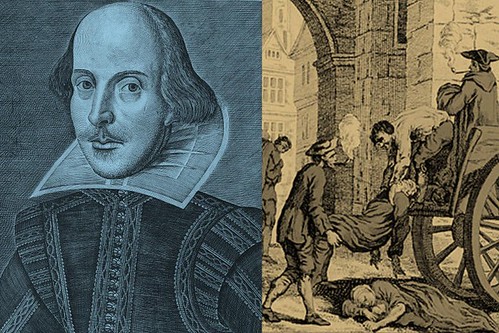
PREV ARTICLE
NEXT ARTICLE
FULL ISSUE
PREV FULL ISSUE
LOOSE CHANGE: MARCH 15, 2020Here are some additional items in the media this week that may be of interest. -Editor Eyam's Black Death Coins
The Washington Post article shows how coins helped one town live thorough the Black Death. -Editor 
A visitor places a coin on Eyam's boundary stone. It was called the Black Death. And it was far deadlier than coronavirus. As governments around the world impose quarantines to prevent the spread of covid-19, it is worth remembering the extraordinary story of Eyam, England, the Derbyshire village that faced an outbreak of the bubonic plague in the 17th century. A quarantine cordon was established with a one-mile radius marked by a ring of stones. For 14 months nobody went in or out of the village. Food was left at the boundary stone by nearby townspeople in exchange for gold coins submerged in vinegar, which villagers believed would disinfect them. The death-rate skyrocketed. During its seclusion, Eyam suffered. Bodies piled up; families were instructed to bury their own dead on the outskirts of town. In all, 260 of Eyam's estimated 800 residents perished during the quarantine, more than double the mortality rate of the Great Plague of London. But Mompesson and the villagers' self-sacrifice had worked. The plague never spread to nearby towns and, 14 months later, in November 1667, the quarantine was lifted. To read the complete article, see:
The Infectious Pestilence Did Reign
For bibliophiles and anyone killing time in self-quarantine, here's a great Slate article about how the plague ravaged William Shakespeare's world and inspired his work. -Editor  Why didn't Friar John deliver Friar Laurence's letter to Romeo? Because he's stuck in quarantine. Romeo and Juliet are star-crossed once they're indirectly plague-stricken. The plague is the plot twist that turns the most famous love story ever told into a tragedy. This exchange is over before most kids reading in high school realize what happened. And yet the whole play turns on this one scene. You might be wondering how the plague could be pulling the strings of Romeo and Juliet, and you might not have known until this very moment. As it turns out, that was the point. Shakespeare was being purposefully obtuse. He wrote in veiled language because the subtext would have been obvious back then. He didn't have to belabor the point. Mentioning the plague was the Shakespearean equivalent of ending a tweet with "Sad!" There was no need for any sort of further explanation. "It was omnipresent," says Columbia University professor James Shapiro. "Everybody at the time would have known exactly what those one or two lines meant." To read the complete article, see:
Wayne Homren, Editor The Numismatic Bibliomania Society is a non-profit organization promoting numismatic literature. See our web site at coinbooks.org. To submit items for publication in The E-Sylum, write to the Editor at this address: whomren@gmail.com To subscribe go to: https://my.binhost.com/lists/listinfo/esylum All Rights Reserved. NBS Home Page Contact the NBS webmaster 
|